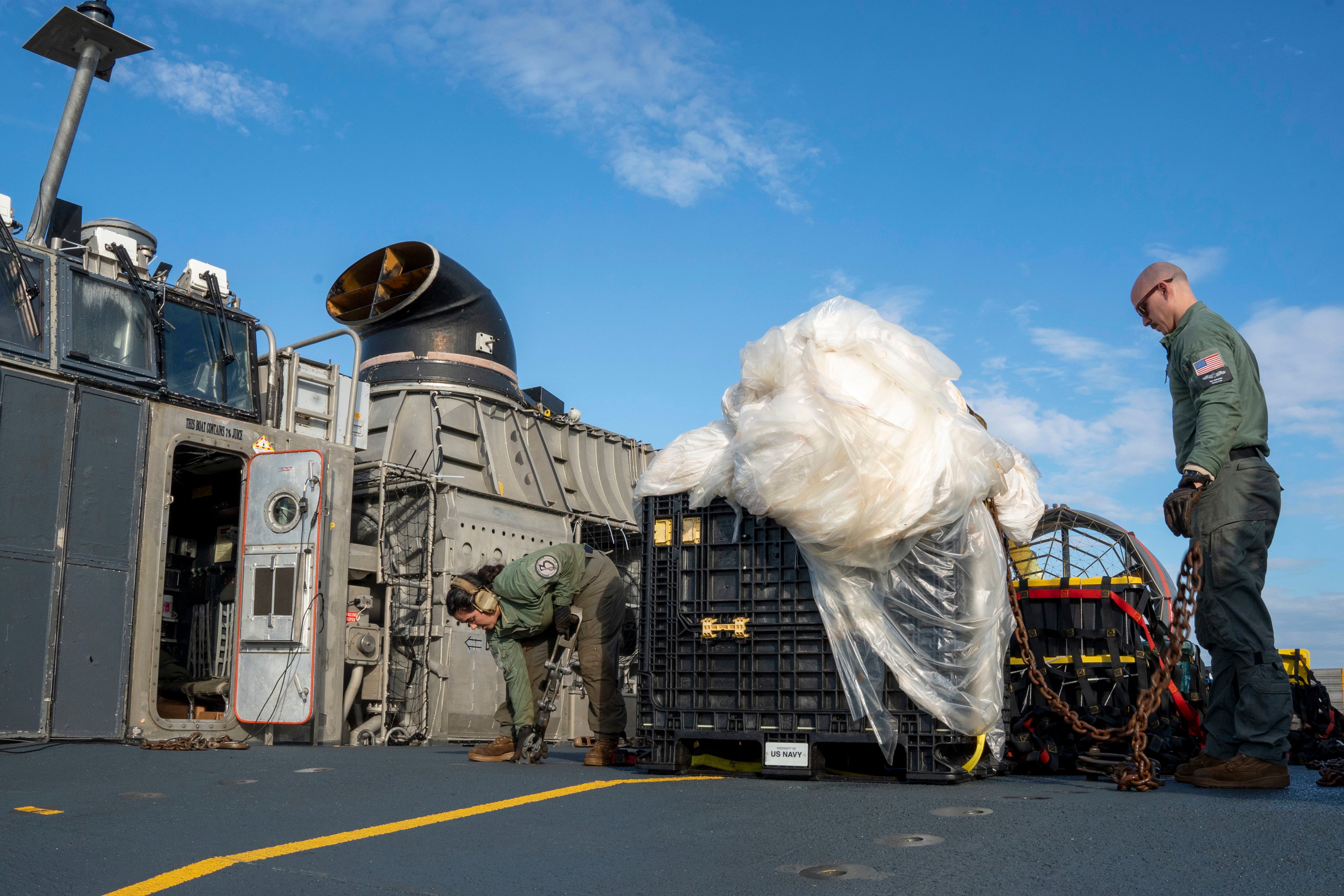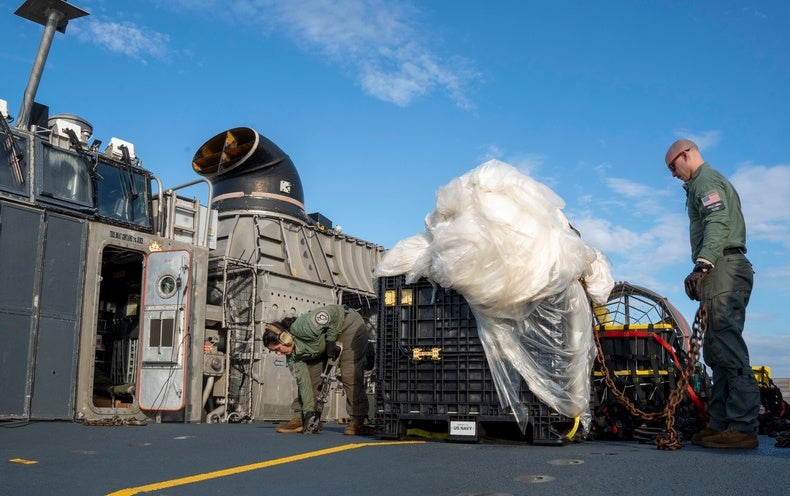
At latest count, Sidewinder missiles have burst both a wayward Chinese balloon and three “unidentified objects” floating over the U.S. and Canada. These suspected spies cast an unexpected spotlight on a significant national security issue: balloons and drones gathering intelligence for foreign powers.
But they also provide a likely explanation for some of the last decade’s highly publicized sightings of unidentified flying objects by military pilots. At least a more plausible explanation than extraterrestrials. And the Pentagon’s past habit of punting such observations to a quirky and inadequate team of investigators from an obscure task force was an institutional failure.
Although the first balloon burst, a 200-foot-high white sphere, was the opposite of stealthy or unidentified, the more recent aerial objects downed over Alaska, Canada and Lake Huron, fell squarely in the realm of unidentified anomalous phenomena (UAP), the latest name for UFO’s that the Pentagon settled on last year.
Birds, party balloons, weather balloons and trash that might be labeled UAP fill the sky, along with drones, consumer and otherwise. We now know that the U.S.-Canada North American Aerospace Defense Command had blunted its radars to prevent such aerial flotsam from cluttering its screens, according to the White House. Until now, the priority targets were aircraft and missiles, which are large and fast. Small, slow objects, like balloons, were filtered out and ignored.
That’s why we didn’t know about the balloons that likely explain the “GoFast” UFO sighting made by U.S. Navy pilots in 2015, a seeming high speed encounter over the ocean that, in truth, depicts a much slower object made to look fast by the parallax effect, where the high speed is only relative to the Navy plane, like a tree “flying” past the window of a train. Balloons might even explain some aspects of the 2004 USS Nimitz “Tic Tac” incidents.
Now radars are looking for such objects. That’s why pilots are seeing—and shooting down—UAP. Descriptions of the UAP encountered by some Navy pilots also tally with aspects of newly revealed incursions of Chinese balloons during the Trump administration. Politico reported that intelligence analysts assessed that some small objects detected off the coast of Virginia were Chinese radar-jamming devices. This could correlate with multiple reports of erratic radar returns by pilots training in that area. One visual sighting described by pilots as a “cube in a sphere” is a close match for an inflatable radar decoy.
In observing the Pentagon’s UAP task force and having done detailed analyses of several cases they struggled with, I find abundant reasons to doubt their capabilities to crack those kinds of UAP cases. A slide in a congressional briefing reportedly prepared by the task force head, John Stratton, according to a popular UFO podcast series, claimed to show “three UAP” hovering over a Navy ship. Those UAP were stars, I demonstrated last year, and their curious triangular shape was a camera artifact, a conclusion later confirmed in Congressional testimony. My analyses of other task force cases, involving gun camera footage of indistinct shapes, have also been supported by Pentagon sources cited by the New York Times.
The past mistakes matter, not only because the task force’s initial attempts at identification failed but because that office was notable for its small size, dubious background in paranormal investigations (really), and poor record in not only failing to solve cases but sometimes getting them entirely wrong. This leads us to question how many other cases of foreign surveillance were swept under the rug as UAP.
How many other Chinese (or Russian or other) spy drones have military and intelligence officials sidelined as UFOs, rather than terrestrial threats? The first public report produced by the UAP task force in June 2021 listed 144 cases, of which they could only solve one with high confidence, identifying it as a large, deflating balloon (of unstated nationality). The remaining 143 presumably include the handful that were later identified as Chinese airspace incursions.
After the Pentagon restructured the task force into a new organization called the All-domain Anomaly Resolution Office with new personnel last year, a second report was released in January. The report added 366 new cases to the 143, but the number with a seeming explanation jumped from one to 195, with a majority of those, strangely enough, thought to be balloons. It is likely this was achieved by a new technique of reviewing archived raw radar footage, from which the slow-moving balloons (and a few drones) had previously been filtered out as “clutter.”
While most were likely mundane airspace clutter such as mylar party balloons and consumer drones, some of them could represent Chinese intelligence-gathering platforms. It is unlikely we can resolve any historical cases as such, but when new balloons are detected, this could be determined by intercepting them, shooting them down, and examining the wreckage.
Some UFO enthusiasts initially leaped on the big Chinese balloon as an example of how foreign attempts at spying would be easily detected, concluding that it was evidence that the other reports of more ambiguous UFOs were not conventional human technology.
But subsequent developments point in the opposite conclusion: The big balloon was large and obvious. Smaller balloons and other aerial platforms have, both literally and figuratively, slipped under the radar for years. Senate Majority Leader Chuck Schumer of New York described the latest objects shot down as part of a worldwide “crew of balloons.”
The Pentagon’s new resolution office is doing better. But its establishment was still loosely rooted in a history of people hoping that UFOs are alien visitors—their proclamations sparking misdirected public uproar, despite a decades-long deficit of clear supporting evidence. The reality of persistent Chinese attempts at airspace intrusions and surveillance should lead the Pentagon to focus instead on the very real tasks at hand.
This is an opinion and analysis article, and the views expressed by the author or authors are not necessarily those of Scientific American.

